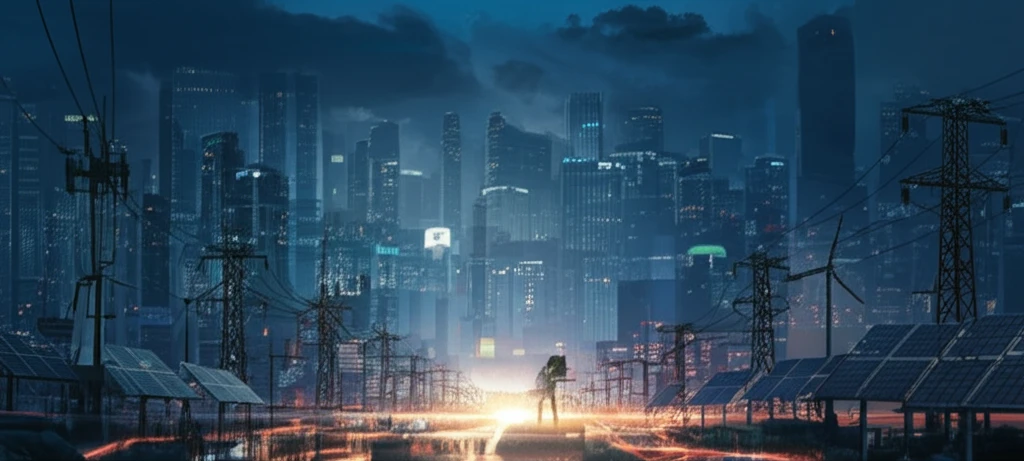
Smart Grid Solutions: How D-STATCOM Technology Stabilizes Power for a Sustainable Future
"Explore how advanced D-STATCOM designs are enhancing grid resilience and paving the way for renewable energy integration."
In our increasingly electrified world, the demand for a stable and reliable power supply is more critical than ever. As electricity consumption fluctuates and renewable energy sources become more integrated into our grids, maintaining voltage stability poses significant challenges for transmission system operators. These challenges necessitate innovative solutions capable of responding quickly to changing grid conditions, ensuring that power remains consistent and reliable, whether during normal operations or unexpected events.
One promising technology that addresses these challenges is the D-STATCOM (Distribution Static Compensator). This device is a fast-response reactive power source based on grid-connected Voltage Source Converters (VSC). D-STATCOMs regulate voltage and compensate for reactive power in distribution networks, making them indispensable for modern power systems. By rapidly injecting or absorbing reactive power, D-STATCOMs maintain voltage levels within acceptable limits, preventing voltage collapse and ensuring grid stability.
Recent advancements in D-STATCOM designs have focused on enhancing their performance and increasing their power ratings. Among these innovations, the dual-converter topology has emerged as a particularly promising approach. This configuration parallelizes standard inverters using coupled magnetic elements, allowing for increased power capacity and improved current sharing between converters. This article explores the design and implementation of a high-power D-STATCOM based on an isolated dual-converter topology, highlighting its benefits for grid stabilization and renewable energy integration.
The Dual-Converter D-STATCOM: A Deep Dive into Design and Functionality

The dual-converter D-STATCOM topology uses two parallel-connected inverters linked through coupled magnetic elements. This configuration offers several advantages over traditional single-inverter systems, including increased power capacity and improved current sharing. Each phase of the inverters is parallelized using adjacent coils that are magnetically linked, ensuring balanced current distribution and reducing stress on individual components.
- Increased Power Capacity: Parallelizing converters effectively doubles the power handling capability of the system.
- Improved Current Sharing: Coupled magnetic elements ensure balanced current distribution between converters.
- Reduced Circulating Currents: Isolated DC links minimize unwanted circulating currents, enhancing efficiency.
- Enhanced Reliability: Distributing the load across multiple converters reduces stress on individual components.
Future Implications: Strengthening Grids for a Sustainable Tomorrow
The high-power D-STATCOM design based on the isolated dual-converter topology represents a significant advancement in grid stabilization technology. By enhancing voltage stability, improving power quality, and facilitating renewable energy integration, this technology paves the way for a more sustainable and resilient power grid. As the demand for electricity continues to grow and renewable energy sources become more prevalent, D-STATCOMs will play an increasingly vital role in ensuring a reliable and sustainable energy future for all.
